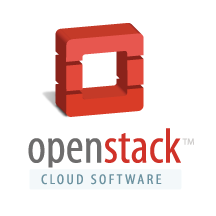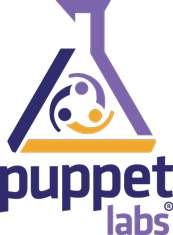 Believe it or not, my dear Linux friends, a lot of IT pros still believe they need Windows servers. They have this goofy idea that Active Directory, SharePoint, Exchange, Windows Server, SQL Server, and all the other members of the lardy malware vector family are the only proper business backends. They have this funny notion that Microsoft servers are easier to run. I must refute this odd notion with reality: they are not. They are expensive, troublesome, less-capable, and pointy-clicky does not equal easier to use, nor does it negate having to possess actual skills and knowledge.
Believe it or not, my dear Linux friends, a lot of IT pros still believe they need Windows servers. They have this goofy idea that Active Directory, SharePoint, Exchange, Windows Server, SQL Server, and all the other members of the lardy malware vector family are the only proper business backends. They have this funny notion that Microsoft servers are easier to run. I must refute this odd notion with reality: they are not. They are expensive, troublesome, less-capable, and pointy-clicky does not equal easier to use, nor does it negate having to possess actual skills and knowledge.
But, rather than squandering precious pixels on things we already know, let’s look at some of the great Linux and free/open source software for building a proper business computing infrastructure. The Linux world presents a wealth of great software, and offers (by many country miles) the most cross-platform interoperability, so you never have to settle for sad, limited, expensive Windows-ware.
Linux Business Servers
You can get a Linux business-server-in-a-box with everything in a nice bundle and good graphical interfaces and dashboards: directory services, mail server, Internet gateway, file and print services, DNS, DHCP, VPN, backup, network map, monitoring and alerting, RADIUS, media servers, cloud servers, and on and on…you know the drill. Plus commercial add-on apps such as Active Directory and Exchange connectors, for those who need to interface with Windows servers.
ClearOS offers free community editions, and commercial support and services. It includes a reasonably-priced option for Zarafa groupware suite, which includes email, calendaring, contacts, and connectors for Outlook, Blackberry, and all ActiveSync devices.
Zentyal and Univention Corporate Server are similar to ClearOS, with free and commercial versions, and various Windows connectors. They’re all good, and their pricing on their commercial offerings is reasonable, much less than your typical proprietary vendor’s enthusiastic price tags.

Linux Groupware Servers
If you don’t have to talk to Windows servers and just need an open source community-supported messaging, file, calendar, contacts, wiki, and collaboration services suite, go with Citadel BBS. Citadel is 100 percent GPL and always free of cost. Of all the Linux groupware servers Citadel is the easiest to install and administer.
Honorable mentions go to Horde Groupware and Kolab. These are well-supported and have all the bells and whistles.
Do It Yourself: Which Linux?
Perhaps you prefer to build your own, so where do you start? You don’t have to pick one Linux distro, but can mix and match according to your needs. You could go with a commercially-supported distro such as SUSE Enterprise Linux, Red Hat Linux, or Ubuntu Server for important servers, or for complex setups that you want some extra support for, and use free-beer Linuxes for other servers. Unlike Windows, any Linux distro can be customized for any use without having to jump through multiple price points differentiated only by varying degrees of missing features.
If you prefer a 100 percent community-supported distro, you have multiple great choices. Debian Stable is still the gold standard for rock-solid-reliability. It has the largest number of packages, and it supports the largest number of hardware architectures.
 Slackware is sleekly efficient, and CentOS and Scientific Linux are the top free Red Hat clones.
Slackware is sleekly efficient, and CentOS and Scientific Linux are the top free Red Hat clones.
Ubuntu Server is first-rate, and if you don’t want paid support it’s an easy download like any free-of-cost distro, without having to jump through registration hoops. Ubuntu doesn’t support as many hardware architectures as its parent Debian, but it supports ARM and POWER8, which are the two most important and fast-growing, non-x86 architectures.
Mageia Linux and Linux Mint are nicely-polished and backed by strong organizations, and OpenSUSE is a reliable oldtimer that is both stable, and full of technology previews destined for inclusion in SUSE Enterprise Linux.
Now, what services do you need? File and print, virtual machines, name services, LAMP stacks, development environments, virtualization, containers, network, system administration, language packs, version control systems, text processing, hardware utilities, and on and on…it’s all there. So let’s look at a select set of modern services that are useful for running a datacenter, and that perhaps don’t get enough attention.
openSUSE Build Service
openSUSE Build Service gets its own category, because it is a marvelous tool for building custom software packages for all distros. With just a few steps you can create binaries for a whole raft of distros: SUSE, Red Hat, Ubuntu, Fedora, Debian…well, you get the picture. Sometimes I think SUSE is too shy for their own good, because something this cool and useful should be wildly popular.
Directory Services
Active Directory is an obese ugly GUI plastered on top of LDAP and proprietized versions of Kerberos and DNS. You can skip all the weird stuff and go straight to the source with OpenLDAP, Kerberos, and whatever open source DNS server you prefer, such as BIND, NSD, and PowerDNS. Setting up a directory server can be complex, so using a prefab edition saves headaches. SUSE Linux has a nice YaST module for managing LDAP, and Ubuntu includes the excellent 389 Directory Server, which used to be called the Fedora Directory Server.
Red Hat’s Directory Server is based on 389, and of course you can install 389 on any distro.
Cloud Servers
You can’t beat ownCloud for easy installation and administration. The ownCloud engineers have done a great job of building complex technologies into a friendly package. ownCloud provides a central management console for your hodge-podge of data storage: FTP servers, network-attached storage devices, remote storage, and public services like Dropbox, Amazon S3, and Google Drive. ownCloud also connects to Windows network drives, and the beta 7 Enterprise release supports mounting SharePoint libraries.
ownCloud is all about managing your data, so if you need application and platform servers look at OpenStack. OpenStack is still evolving rapidly, and has a rather steep learning curve. SUSE and OpenSUSE have the best OpenStack tools and integration, and you’ll be up and running in minutes. Red Hat and Ubuntu also have good OpenStack support, but you really need to check out how SUSE does it because it’s a work of beauty.
Mirantis is also worth a look as it is a specialized OpenStack distro with excellent management tools. Management is everything with complex technologies.
File and Backup Services
My pick for the best file and backup server isn’t Linux, but rather is based on FreeBSD and the ZFS filesystem: FreeNAS. FreeNAS delivers an amazing amount of functionality: snapshots and replication, encryption, streaming media, game server, RAID, torrent client, ownCloud, and lots more. You can buy FreeNAS already loaded on good server hardware, and I confess I have a serious case of the wants for the FreeNAS Mini. This little box has it all: good stout server-grade hardware, and it’s cute.
Automated Systems Management
Maybe you enjoy doing everything by hand, but handing dull routine chores over to Puppet or Chef is my preference. Plus you get to argue over which one is better. I have the definitive answer for which one is better, and that is “Both.” Both support Linux and all Unix-type systems and Windows, and both perform the same tasks: provisioning, configuration, patching, and updating. They also monitor your systems to make sure that they stay the way you want them to.
Well here we are at the end, and I’ve barely scratched the surface. Please share your own favorite FOSS and Linux tools for building a proper IT infrastructure in the comments.





